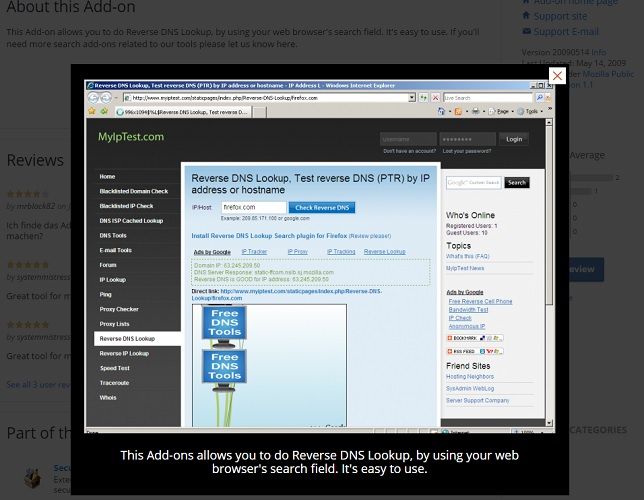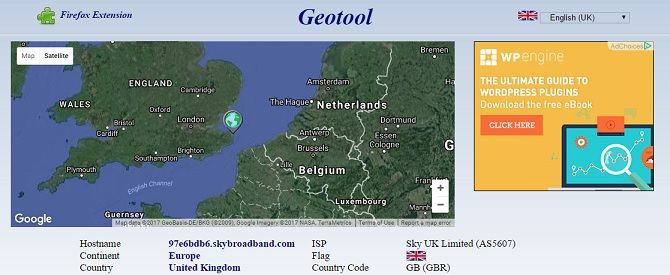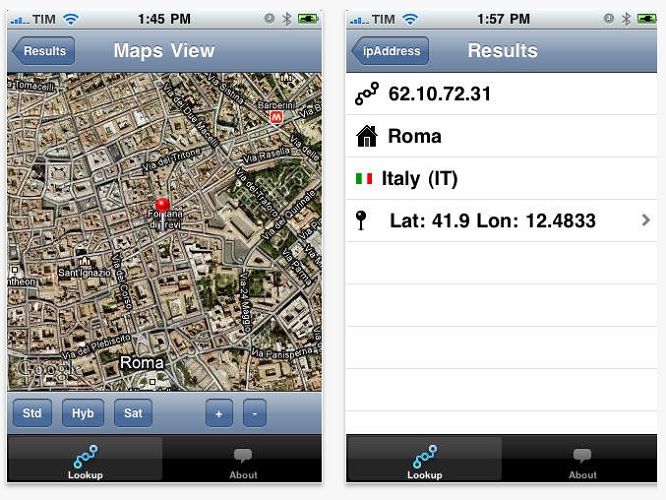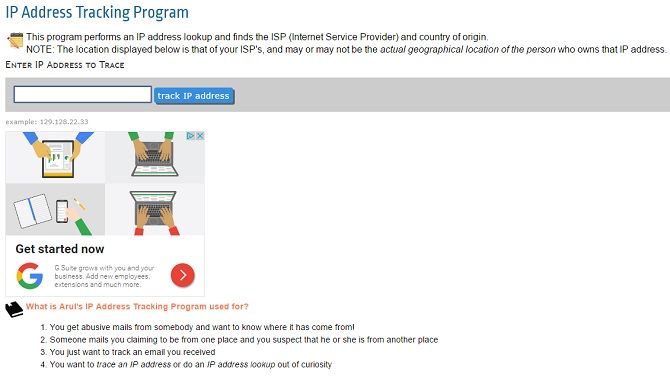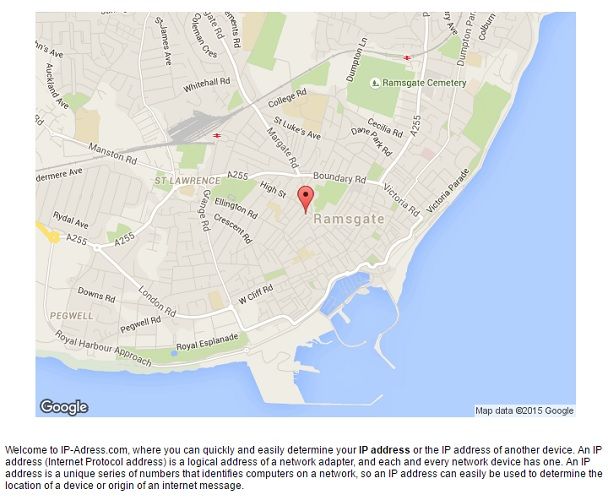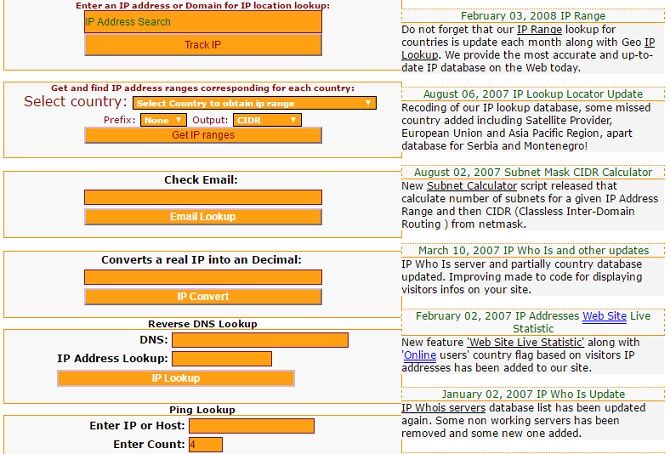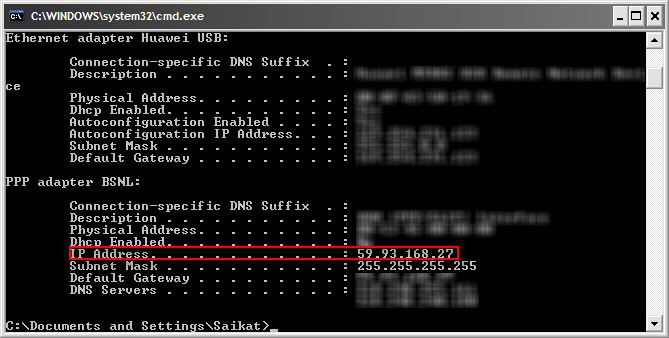An Internet Protocol (IP) address is as unique to a computer as a fingerprint is to us.
An IP address enables one networked device to talk to the next. The downside of this inter-connectedness is that a logical location provided by the IP address is an open arms invitation to spammers and hackers. The art of war necessitates the importance of knowing who your 'attacker' is. Being able to trace an IP address to a PC is a direct way to remove the cloak of anonymity from a computer communicating with your own.
What Is an IP Address?
In case you don't know what an IP address is yet: it's a series of digits separated by dotted decimals and represented from 0.0.0.0 to 255.255.255.255. We are still currently following the Internet Protocol Version 4 (IPv4), although its successor, Version 6 (IPv6) -- developed in 1995 -- has been standardized, and deployed since the mid-2000s.
A good hacker will take steps to prevent his IP from being revealed. A spammer might hide behind a proxy server. It is also important to remember that locating an IP address using online tools does not reveal the physical address of the guy on the computer.
Tracking an IP address, for instance, means you can find the source of email; a MakeUseOf reader might use such techniques in order to find out the locations of potential customers making inquiries through their company's website. They can also use that information to offer up custom content based on their IP address. The basic tools merely tell us the location of the Internet Service Provider (ISP) supplying the connection by using publicly available information. To go beyond that and actually nail down, say, the guy sending you dirty emails would require the law to be in the loop.
Fortunately, the internet is packed with sites that'll help you trace an IP address to a PC. Any one website should be enough, but is there any harm in bookmarking a few more?
Part 1: Trace an IP Address to the Country and City of Origin
MyIpTest.com
This web service provides a whole range of geolocation services. Included tools are IP Lookup, Reverse IP Lookup, Traceroute, Ping, among others, notably Email Tools which lets you trace senders using Email Headers. You can even do this through Facebook!
Also of use is a handy link which you can use to get someone else's IP. Field the IP address in the IP address location box and the results give you the geolocation info behind the address and a marker on a Google Map. A Firefox add-on, MyIpTest, is also available from the Firefox Add-ons gallery.
Geotool
Enter an IP address or host name into the single field box, and extensive information follows, including the host's name, postal code, and local time. Geotool also uses Google Maps to depict the geographical location of the originating IP address, as well as displaying longitude and latitude.
Its associated Firefox extension shows a country flag representing the location of the current IP address (or URL), updated monthly, and gives one click quick access to detailed location and web server information. Geotool values your privacy and security, also offering malware checks on websites you visit, and running your location searches locally.
HostIP
HostIP is a community-driven project to resolve IP addresses. At present, it has roughly 9,245,104 entries in its database. You can contribute information to the database (it only takes a few seconds!), which is accessible to all. The site's FAQ goes into the motivation behind the idea and tackles the notion that it can be used by spammers. The project is an alternative to commercial geolocation databases. The site also provides a Firefox add-on, and an iOS app [No Longer Available] -- though its accuracy is up for debate -- while further offering a connection speed test that inexplicably requires Flash.
DomainTools
This Whois Lookup search service provides a spiffy domain name lookup service along with IP address searching, but the first thing you'll notice is how gorgeous the site is. The information is comprehensive including contact data, like listed telephone numbers and email address of the hosting service. The Whois access is free while other domain tools (the Power Tools) come with the paid options.
Arul John’s Utilities
A simple box and a simple IP address tracking service, but one which also offers you the option of tracking a US telephone number. You can add the IP tracker to your website as a Google gadget.
IP-Address
IP-Address has three information pages which are of use to us -- the homepage of IP-Address detects your IP, IP-Tracer locates the source of any IP address, and Email Trace, which nails the location of the senders IP address. With the latter, we simply need to paste the email header info in the box provided to get details about the sender.
IP Address Location
While the interface might initially look clumsy (and certainly ad-filled), the web service provides different tools for locating IP addresses. With an input, you can find the exact location of any IP address plus the Operating System (OS) used, DNS, IP address range of the country, country code, and country flag. The integrated Geolocator and a world map narrows down to the city and country. Also included is a tool to check the validity of an email address.
According to the site, its IP database is updated every 48 hours.
Part 2: How to Find Your Own IP Address
Some might say that an IP address is akin to a home address, but really, it's not as simple. Lots of geek speak and networking lingo would be required to explain what's it's all about. The seven online tools already covered not only give you the location of a foreign IP address but yours too as soon as you hit their landing pages.
There are many online services which decipher your IP address in a flash. Here are a few from the swarm, all simple but effective:
Alternatively, if you're using Google, for instance, you can just type in "My IP Address", and it'll come up. If you want to mask where you are, you can fake an IP address.
Wanted to find your IP address on your own using just your OS? Don’t be intimidated; it's very simple to do. Here's how to find your internal IP on Windows:
- Right-click on the Windows button, and click Command Prompt.
- A black box will appear; type in ipconfig/all and hit enter.
- Basic information of your network interfaces is listed along with your device's IP address.
The process is equally straight-forward on Mac:
- Locate Utilities in your Applications, and open the Mac Terminal.
- Typing in ifconfig will display all available interfaces, so there'll be a lot of unnecessary information. You can filter it somewhat by instead typing ifconfig | grep "inet " | grep -v 127.0.0.1
- Your internal IP address can be found by inet.
As it's open-source, with many distros available, we'll focus on the widely-used Debian, Ubuntu, and Mint OSes, all of which use the same commands for locating an internal IP:
- Open Terminal using Ctrl+Alt+T.
- Type hostname –I.
- Your IP should appear on its own, as long as you've no other active interfaces.
Please note that your IP address may be static or dynamic depending on how the Dynamic Host Configuration Protocol (DHCP) server (the protocol that automatically assigns IPs) is configured.
Have You Ever Traced an IP Address?
The ISP service provider knows exactly where we are located. With the tools mentioned here, at best we can find the approximate area (even though a city is a large area!). It's still useful---to make sure someone is genuine, for example, or, if you run a business, for advertising campaigns---and it can be fun too.
What about IP addresses of mobile devices? There are plenty of tools for finding your IP address on your phone.
And if you own a website, check out the free IP Geolocation API so you can tailor the site to your visitors.
Image Credit: FotoCuisinette via Shutterstock.com
Originally written by Saikat Basu on August 11th 2009


